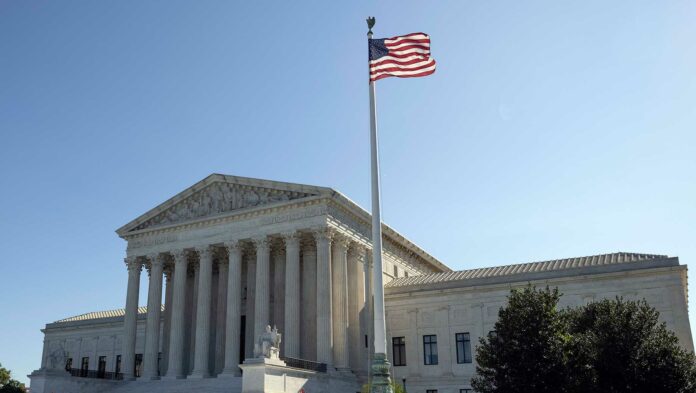WASHINGTON — In a surprise decision, the Supreme Court ruled against Alabama, stating that the state had diluted the power of Black voters by drawing a congressional voting map that included only one district where they constituted a majority. Chief Justice John G. Roberts Jr., joined by Justices Brett M. Kavanaugh, Sonia Sotomayor, Elena Kagan, and Ketanji Brown Jackson, wrote the majority opinion in the closely divided 5-to-4 ruling. This decision marks a significant win for voting rights advocates and breaks with previous conservative court rulings that narrowed the scope of the Voting Rights Act.
Supreme Court: Chief Justice John G. Roberts Jr. Writes Majority Opinion
Chief Justice John G. Roberts Jr., joined by Justices Brett M. Kavanaugh, Sonia Sotomayor, Elena Kagan, and Ketanji Brown Jackson, wrote the majority opinion in the closely divided 5-to-4 ruling.
Supreme Court: Redistricting Battle and Disadvantages Faced by Minority Communities
The case arose as part of a broader redistricting battle unfolding nationwide, with civil rights leaders arguing that the redistricting process often disadvantages minority communities that are growing in population. Republican state officials, on the other hand, assert that the Constitution limits the role of race in drawing voting districts.
Unanimous Panel Decision and Creating a Second District for Black Voters
Following a challenge by Black voters and advocacy groups under the Voting Rights Act, a three-judge panel of the Federal District Court in Birmingham unanimously ruled that the Legislature should have created a second district where Black voters had a significant presence.
Supreme Court’s Temporarily Blocked Ruling and Impact on the 2022 Election
Last year, the Supreme Court temporarily blocked the lower court’s ruling in a 5-to-4 vote, ensuring that the 2022 election would proceed using the Legislature’s map, which contained a single district where Black voters formed the majority.
Weakening of the Voting Rights Act and Supreme Court Decisions
The Voting Rights Act has faced challenges in recent years. In the 2013 Shelby County v. Holder case, the Supreme Court significantly weakened Section 5 of the Act, which mandated federal approval for changes to voting laws in areas with a history of racial discrimination. However, Section 2 of the Act remained intact for post-facto litigation. In 2021, in Brnovich v. Democratic National Committee, the court further limited the reach of Section 2, hampering the ability of minority groups to challenge voting restrictions.
Allen v. Milligan and Section 2 of the Voting Rights Act in the Context of Redistricting
The Alabama case, Allen v. Milligan, No. 21-1086, also relates to Section 2 but focuses on redistricting. Section 2 prohibits any voting procedure that results in the denial or abridgment of citizens’ voting rights based on race. The provision considers the overall circumstances and whether racial minorities have less opportunity to participate in the political process and elect representatives of their choice.
Implications for Voting Rights and Rejecting “Color-Blind” Boundaries
The Supreme Court’s ruling against Alabama has significant implications for voting rights across the nation. By rejecting the argument for “color-blind” boundaries, the court recognizes the importance of considering race in drawing political boundaries.
Dissenting Opinion and Justice Thomas on a “Color-Blind” Constitution
Justice Clarence Thomas, joined by three other conservative justices, dissented, emphasizing the gap between a “color-blind” Constitution and the current districting system that he considers consciously segregated.
Voting Rights Act’s Original Purpose and the Increasing Partisan Issue of Voting
This decision reflects the ongoing debate about voting rights and comes at a time when voting itself has become a deeply partisan issue. It is one of several major cases the Supreme Court is deliberating this term concerning race and discrimination.






